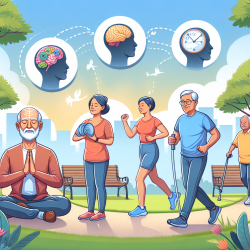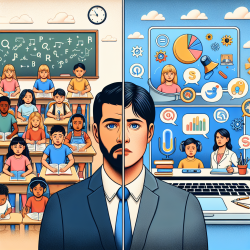Understanding the Role of Envy in Anti-Asian Xenophobia
In the wake of the COVID-19 pandemic, a troubling rise in anti-Asian American and Pacific Islander (AAPI) hate incidents has been observed. A recent study, "The Nature of Anti-Asian American Xenophobia during the Coronavirus Pandemic: A Preliminary Exploration into Envy as a Key Motivator of Hate," provides a data-driven exploration into the factors contributing to this phenomenon. This blog aims to help practitioners improve their skills by understanding and implementing the outcomes of this research.
Key Findings from the Research
The study conducted two separate investigations to explore the link between envious stereotypes and Asiaphobia. The first study revealed that envious stereotypes toward AAPIs are predictive of Asiaphobia. The second study experimentally induced envy to establish causality, confirming that envy leads to heightened levels of Asiaphobia.
The research highlights that AAPIs are often perceived as highly competent but lacking warmth, leading to ambivalent and envious views. This combination of perceived competence and lack of "human warmth" may fuel Asiaphobia, as outlined by the stereotype content model.
Implications for Practitioners
For practitioners, especially those working in speech-language pathology and online therapy services like TinyEYE, understanding the role of envy in Asiaphobia is crucial. This knowledge can inform the development of interventions and communication strategies that address these stereotypes and reduce xenophobia.
- Affective Communication: Practitioners should focus on affective communication that counters the stereotypes of AAPIs being competent but cold. Highlighting stories that showcase warmth and community involvement can help shift perceptions.
- Inclusive Practices: Implement inclusive practices that celebrate diversity and promote understanding among different cultural groups. Encourage open dialogues about the challenges faced by AAPIs during the pandemic.
- Further Research: Encourage further research to explore other affects that may contribute to Asiaphobia and develop comprehensive strategies to address them.
Conclusion
As we continue to navigate the challenges of the pandemic, it is essential to address the underlying factors contributing to xenophobia. By understanding the role of envy, practitioners can develop more effective interventions to create supportive and inclusive environments for all children.
To read the original research paper, please follow this link: The Nature of Anti-Asian American Xenophobia during the Coronavirus Pandemic: A Preliminary Exploration into Envy as a Key Motivator of Hate.










